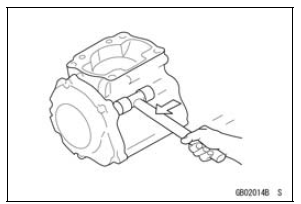

Use common sense during disassembly and assembly, excessive force can cause expensive or hard to repair damage.
When necessary, remove screws that have a non -permanent locking agent applied using an impact driver.
Use a plastic-faced mallet whenever tapping is necessary.

 Tightening Sequence
Tightening Sequence Gasket, O-ring
Gasket, O-ringCity Light (LED) Removal/Installation
Remove:
Upper Fairing Assembly (see Upper Faring Assembly
Removal in the Frame chapter)
Headlight (see Headlight Removal)
Remove the screws [A], and take the city light [B] off the
upper fairing assembly.
Installation is the reverse of removal. Note the following.
When inst ...
Air Intake Duct Assembly (US, CA and CAL Models)
Install the dampers [A] and seal [B] as shown in the figure.
Fit the holder [C] to the air intake ducts [D].
Projections [E] and Holes [F]
Grooves [G] and Ribs [H]
Tighten:
Torque - Air Intake Duct Assembly Screws [I]: 1.5 N·m (0.15
kgf·m, 13 in·lb)
Turn the plug [J] so that ...
Loading and accessories information
WARNINGIncorrect loading, improper installation
or use of accessories,
or modification of your motorcyclemay
result in an unsafe riding
condition. Before you ride the
motorcycle, make sure it is not
overloaded and that you have
followed these instructions.
With the ...